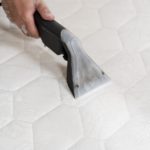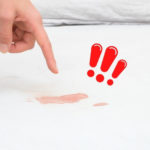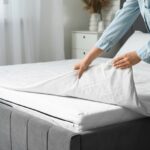Bedwetting, known as nocturnal enuresis to those in the biz, is a common occurrence among both children and adults.
While it’s a normal part of development for young children, it can be embarrassing and inconvenient for individuals of all ages.
One of the challenges that arise from bedwetting is ensuring the proper drying of a mattress.
A wet mattress not only leads to discomfort but can also create an environment conducive to mould and mildew growth, which can pose health risks.
In this article, we’ll explore effective methods to dry a mattress after bedwetting, ensuring both the hygiene and longevity of your mattress.
Drying a Mattress After Bedwetting
1. Act quickly
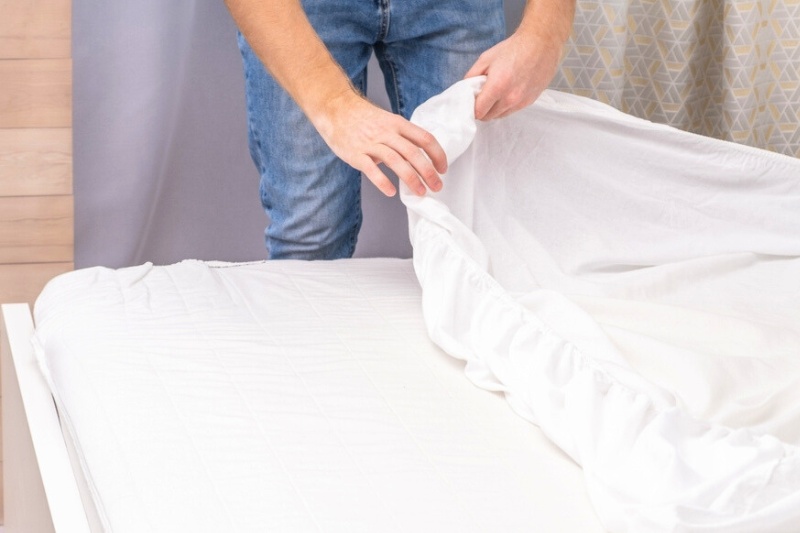
The best way to effectively deal with a wet mattress is to take action quickly. As soon as you discover the bedwetting incident, strip off the wet bedding and remove any additional layers that might have absorbed moisture.
The faster you remove the wet components, the better chance you have of preventing moisture from seeping deeper into the mattress.
Place all the bedding to the side, ready to go in the washing machine, and focus all of your efforts on the mattress.
2. Blot and absorb

Start by blotting the wet area with a clean, absorbent towel or cloth. Gently press down on the wet spots to soak up as much moisture as possible.
Avoid rubbing or scrubbing, as this can push the liquid further into the mattress fibres. Repeat this process with dry sections of the towel until you’ve absorbed as much liquid as you can.
Depending on how bad the situation is, you may need a few towels to get the job done. Use as many towels as possible until you have absorbed as much of the liquid as you can before moving on to the next step.
3. Use bicarbonate of soda (baking soda)
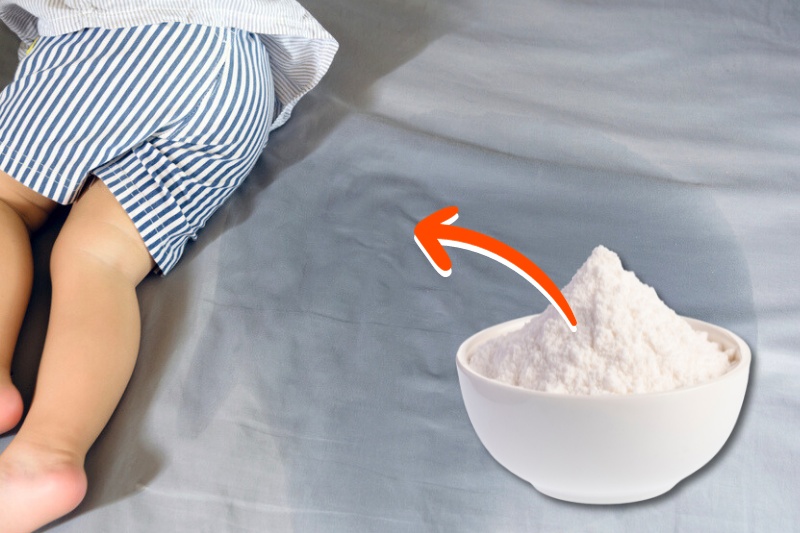
Bicarbonate of soda (also known as baking soda) is a versatile household item that can help absorb moisture and neutralise odours.
We’ve recommended using bicarbonate of soda or baking soda to neutralise odours in carpets and many other things over the years, and it works fantastic for this application, too.
Sprinkle a generous amount of bicarbonate of soda over the wet area of the mattress, ensuring the entire wet patch is covered in a generous layer of it. Let it sit for several hours or even overnight.
Bicarbonate of soda will help draw out the remaining moisture and eliminate any unwanted smells. Afterwards, hoover up the baking soda from the mattress using the upholstery attachment on your vacuum cleaner.
4. Sunlight and fresh air
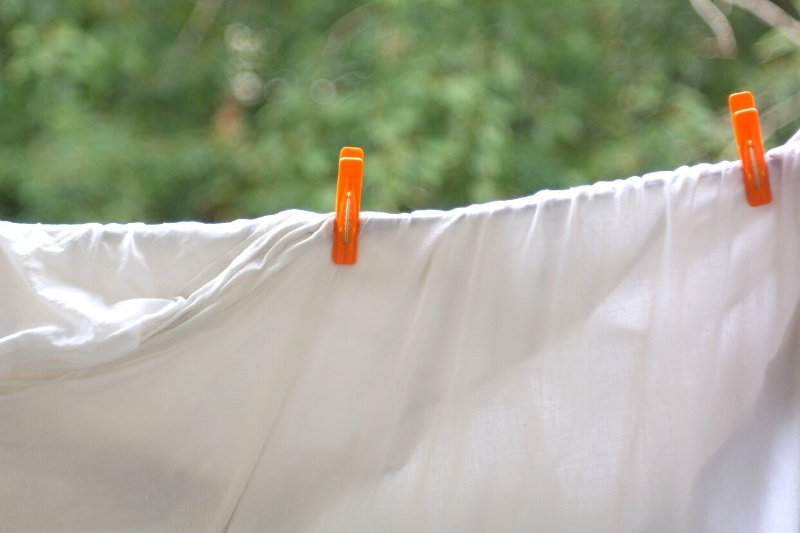
Natural sunlight and fresh air can work wonders in drying out a wet mattress.
If possible, move the mattress outdoors to an area with direct sunlight. Sunlight not only aids in drying the mattress but also helps kill bacteria and eliminate odours.
Prop the mattress up to ensure proper airflow on all sides. Remember to check the weather forecast and avoid exposing the mattress to rain or excessive humidity.
5. Fans and dehumidifiers
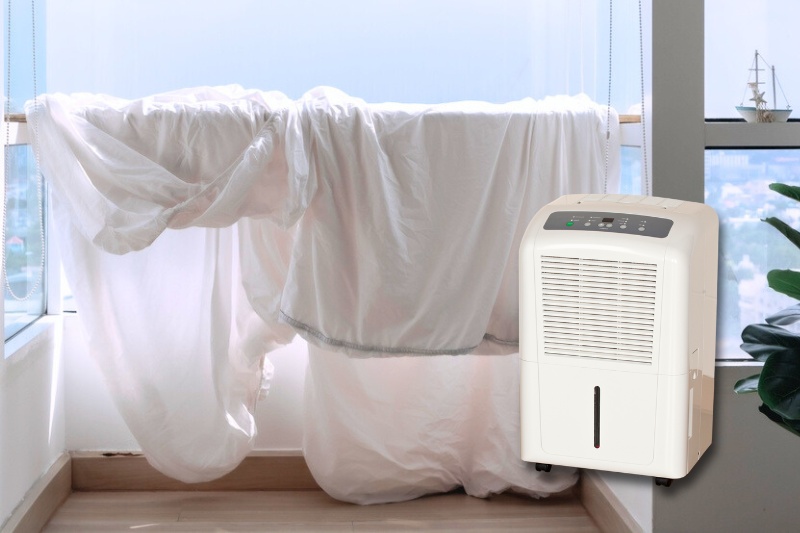
If you can’t take the mattress outside or move it in front of a window, indoor drying can still be very effective.
Start by opening the windows in the room. The fresh air will help to dry the mattress out and eliminate the remaining odour. This may take a while, so be prepared to have the windows open for at least a day.
If you have a fan, you can set this up in the room to create good airflow and circulation. This will force air over the wet patch and dry it out much quicker.
Additionally, if you have a dehumidifier, even better. Using a dehumidifier in the room can help reduce moisture levels, making the drying process faster.
This is particularly useful during colder months or if it’s particularly humid.
Ways to Protect Mattresses

If someone in the home is going through a stage of bedding wetting, there are a few preventative methods you could take to help preserve the life of their mattress.
While this is an embarrassing discussion for them to have, it can ensure that they can sleep comfortably during this episode, so it’s worth exploring the options below with them.
Waterproof mattress protectors
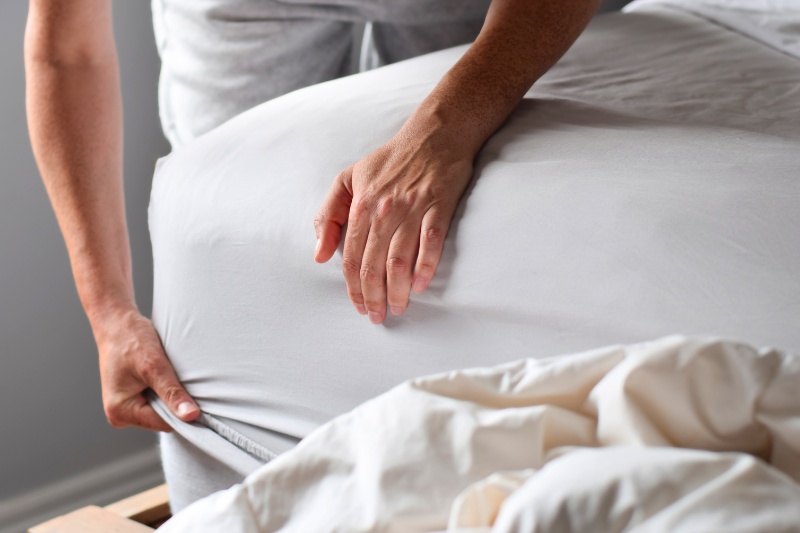
Investing in a waterproof mattress protector is a smart decision, as it creates a barrier between the mattress and any liquid.
These protectors are designed to be easily removable and washable, providing an extra layer of defence against future incidents.
This way, if a nocturnal accident does occur, you can simply strip this and the bedding off, replace the bedding and get back to sleep.
Waterproof mattress protectors aren’t that expensive, and the days of loud, rustling plastic protectors are long gone.
Install one of these Slientnight mattress protectors, and no one will be able to tell the difference.
Absorbent bedding layers
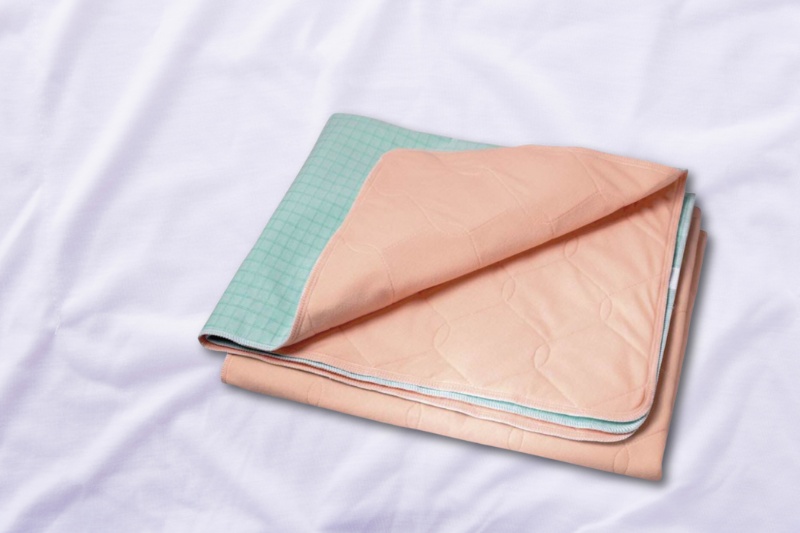
In addition to a mattress protector, consider using absorbent bedding layers. There are specially designed bed pads and absorbent sheets that can quickly soak up any moisture and protect the mattress.
These bedding layers can be placed directly under the sleeper to prevent direct contact between the body and the mattress. These are fantastic at keeping someone warm in the winter, too!
A good option could be this absorbent bed pad from ComfortCare, which can absorb up to four litres of liquid.
Professional Cleaning Services
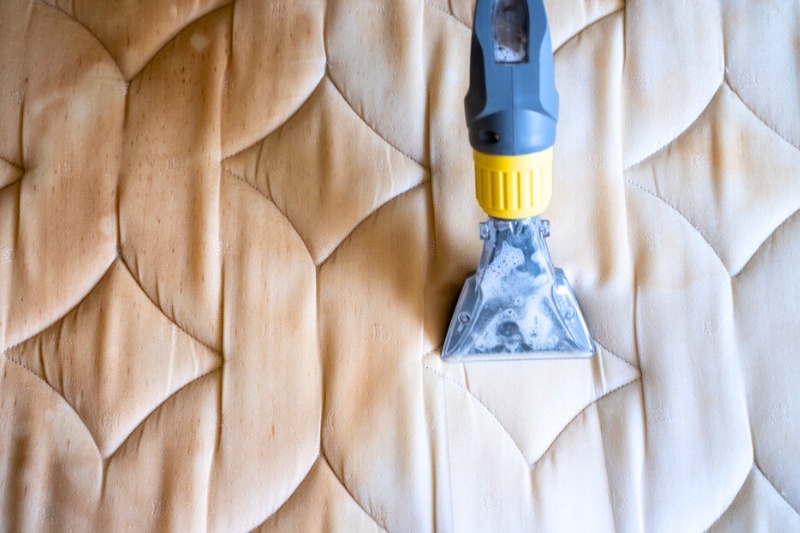
If the bedwetting accident has resulted in a significant amount of liquid soaking into the mattress, or if you’re still concerned about hygiene after drying out the mattress, you might consider seeking professional mattress cleaning services.
These experts have the necessary tools and techniques to thoroughly clean and dry the mattress, ensuring it’s free from moisture, bacteria, and odours.
In Conclusion
Dealing with a wet mattress after a bedwetting incident requires prompt action and the right strategies to prevent mould growth, odours, and discomfort.
By acting quickly, using absorbent materials, harnessing the power of sunlight and fresh air, and employing household items like baking soda, you can effectively dry a wet mattress.
Remember, investing in preventive measures such as waterproof mattress protectors and absorbent bedding layers can significantly reduce the impact of future incidents.
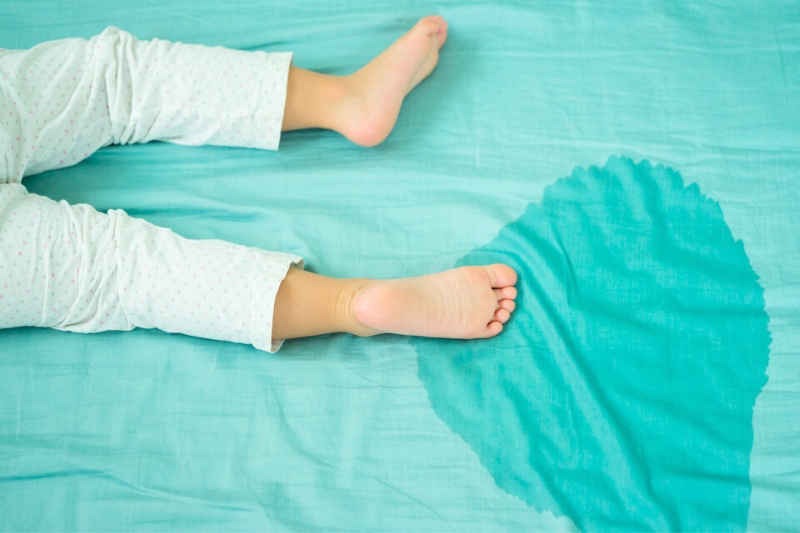
With these methods, you can maintain the hygiene and longevity of your mattress while effectively managing the challenges of bedwetting.
For more in-depth cleaning tips just like this, please explore In The Wash further. We have loads of cleaning articles that can help you take control of your cleaning chores. We also have detailed lists of the best cleaning and laundry appliances and a great deal more.

In The Wash is your guide to the best laundry and cleaning products, tips and tricks. Our mission is to solve the UK’s cleaning and laundry dilemmas!

